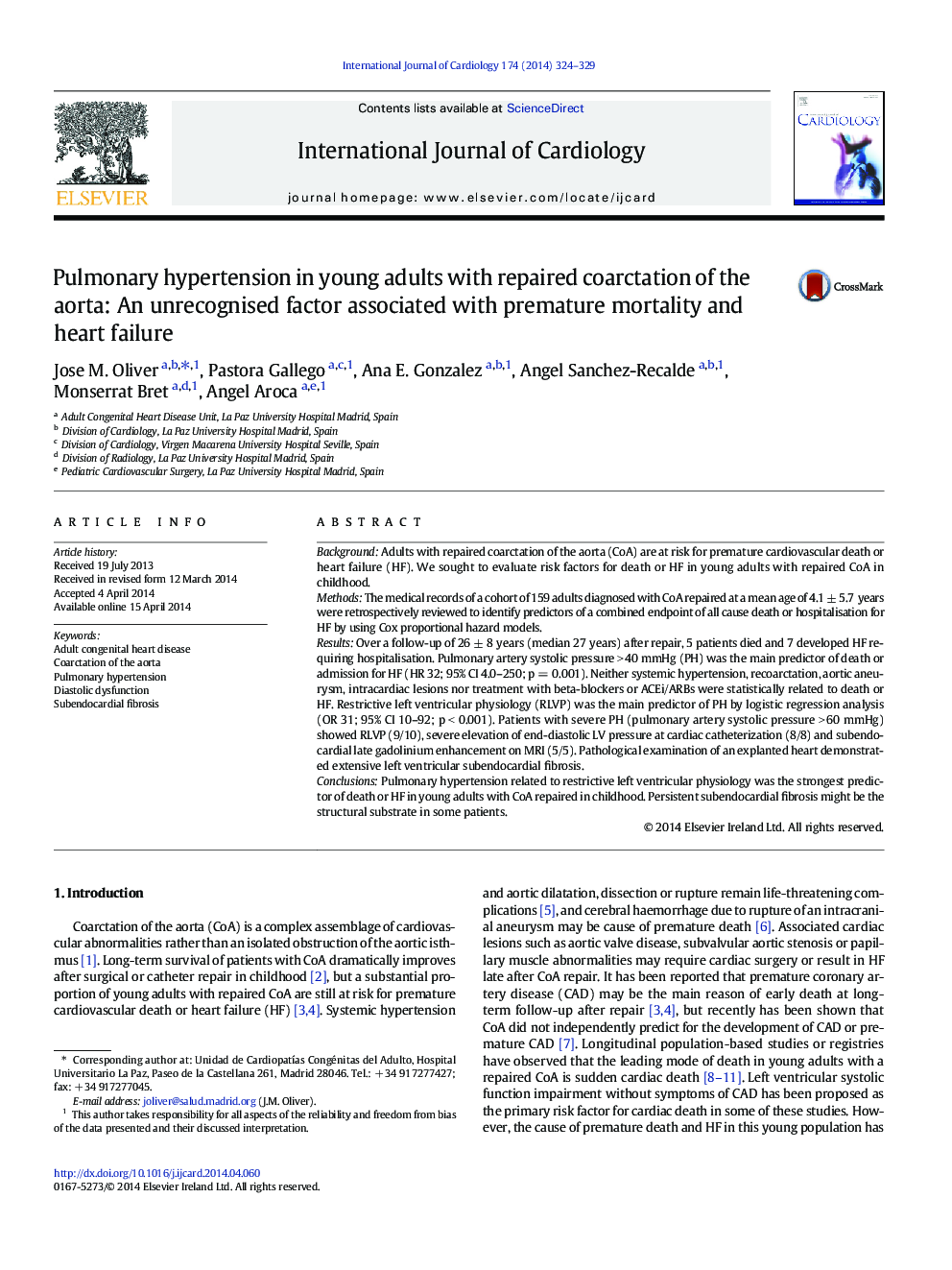| Article ID | Journal | Published Year | Pages | File Type |
|---|---|---|---|---|
| 5970188 | International Journal of Cardiology | 2014 | 6 Pages |
BackgroundAdults with repaired coarctation of the aorta (CoA) are at risk for premature cardiovascular death or heart failure (HF). We sought to evaluate risk factors for death or HF in young adults with repaired CoA in childhood.MethodsThe medical records of a cohort of 159 adults diagnosed with CoA repaired at a mean age of 4.1 ± 5.7 years were retrospectively reviewed to identify predictors of a combined endpoint of all cause death or hospitalisation for HF by using Cox proportional hazard models.ResultsOver a follow-up of 26 ± 8 years (median 27 years) after repair, 5 patients died and 7 developed HF requiring hospitalisation. Pulmonary artery systolic pressure > 40 mmHg (PH) was the main predictor of death or admission for HF (HR 32; 95% CI 4.0-250; p = 0.001). Neither systemic hypertension, recoarctation, aortic aneurysm, intracardiac lesions nor treatment with beta-blockers or ACEi/ARBs were statistically related to death or HF. Restrictive left ventricular physiology (RLVP) was the main predictor of PH by logistic regression analysis (OR 31; 95% CI 10-92; p < 0.001). Patients with severe PH (pulmonary artery systolic pressure > 60 mmHg) showed RLVP (9/10), severe elevation of end-diastolic LV pressure at cardiac catheterization (8/8) and subendocardial late gadolinium enhancement on MRI (5/5). Pathological examination of an explanted heart demonstrated extensive left ventricular subendocardial fibrosis.ConclusionsPulmonary hypertension related to restrictive left ventricular physiology was the strongest predictor of death or HF in young adults with CoA repaired in childhood. Persistent subendocardial fibrosis might be the structural substrate in some patients.
